Musicians practice their scales hour after hour, and play practice pieces over and over again, seeking perfection. In my new studio I too am practising my scales – my colour sense is being subjected to physical testing, using different media to play games and get a sense of direction and purpose in my work. Sometimes this is just distraction activity but not this time – no this is just playing for the pure pleasure of being able to play again.
Ideas driven by the landscape here are bubbling under the surface – indeed the wave images pictures in http://goffgoofsoff.com/2013/12/28/seeing-in-seaford-myth-making-and-ritual/ are already being realised in paint, but need to be structured more than just impressionist. I am still fascinated by how rules govern our lives, rules governed by data more and more, and the relationship extends into the visual now through pixels, more than ever before.
So I have started playing with colour squares and grids, although this is a motif that for me goes back into the 1970’s. It relates to the maps in http://goffgoofsoff.com/2014/01/18/swinging-sixties-didnt-all-swing-in-london/, grid references and how data can be interpreted to give misinformation. The grid is also a traditional artist device for transposing an image from one place to another. Each grid is formed by data, colour adding an analogue presence on paper and the marks the pastels leave adding the notion of identity and a person, a ‘hand’. The pastels also build up into a thick surface of paint pigment so such simple images carry so many messages.
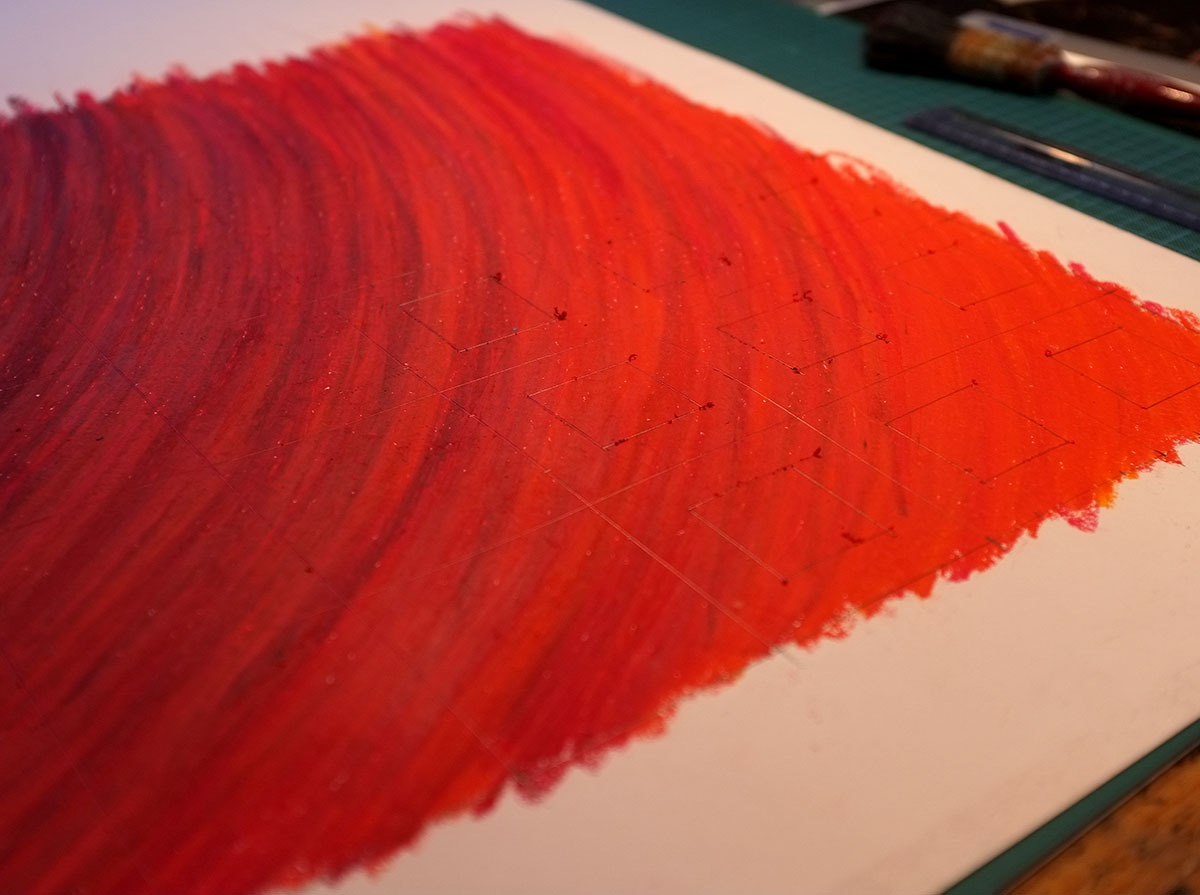
Just drawing up a grid on the pastel raises threads of paint behind the pencil point. The colour is three dimensional
When manipulated through a grid then the simplicity is more apparent than real. In the paintings in the past the grid and the image have existed uneasily, with the grid, the data, dislocating and moving the colour of the image whilst leaving the image itself intact. One element of that shifting has been creating colour moves to articulate the canvas space, creating illusions of overlap and depth. The maps also do this, as roads disappear ‘under’ panels and reappear again. Attempting to read the maps creates confusion as the reader uses the literal language of map reading in the more abstract language of painting.
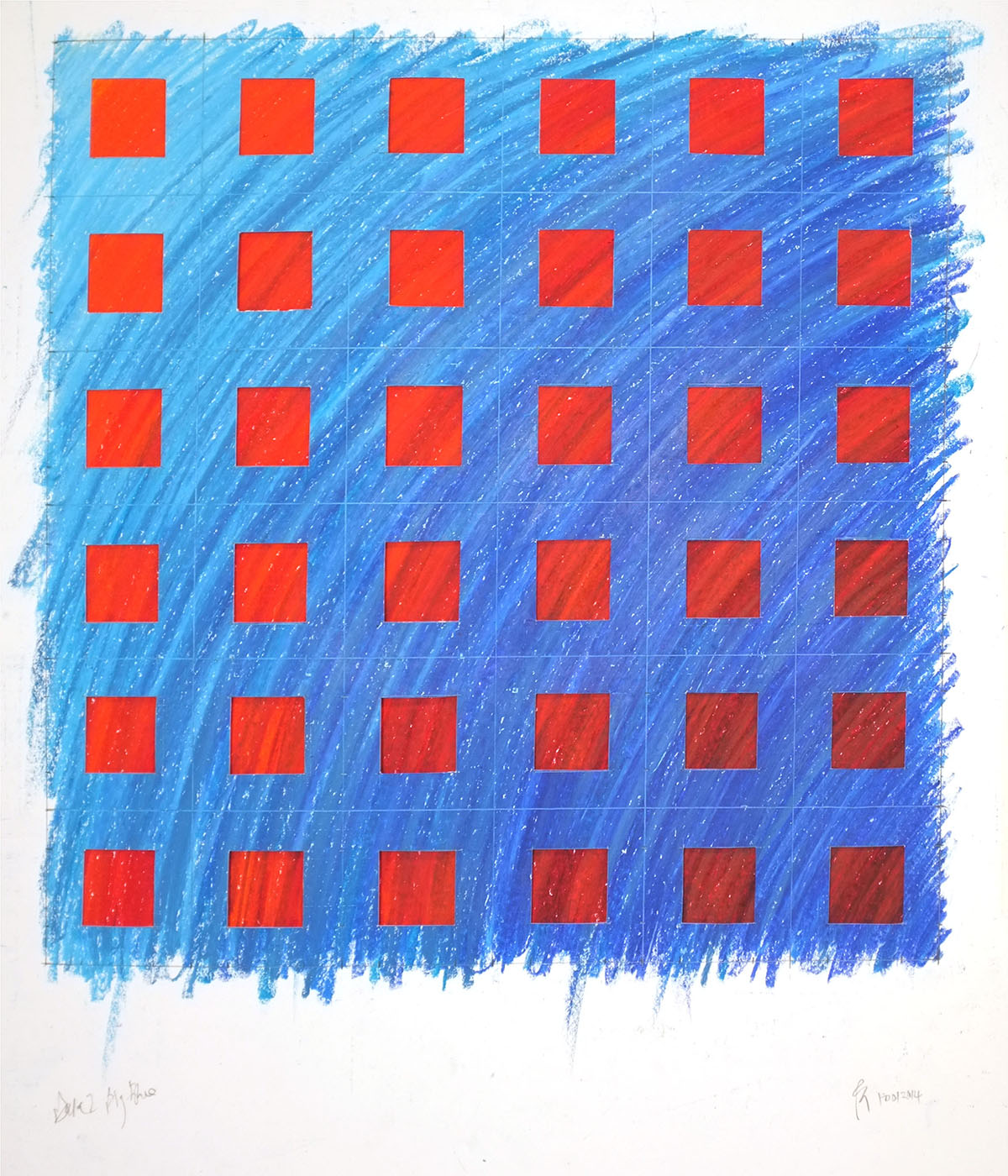
the mark of the hand laying down the colours is the same but different – the grid overlays and invites comparison
Goethe believed colour had a language and colour has certainly been used expressively by artists since the invention of oil paint, and increasingly removed from images since Turners explosions of expressive paintings where the viewer is keyed in by the title. Colour has been explored through abstract impressionism, and through the op art movement by artists such as Victor Vasarelly and Bridget Riley. Colour in image has been pushed to extremes by artists like Patrick Caulfield who broke painting down into smaller parts to explore and reconstruct his own creative painterly language.
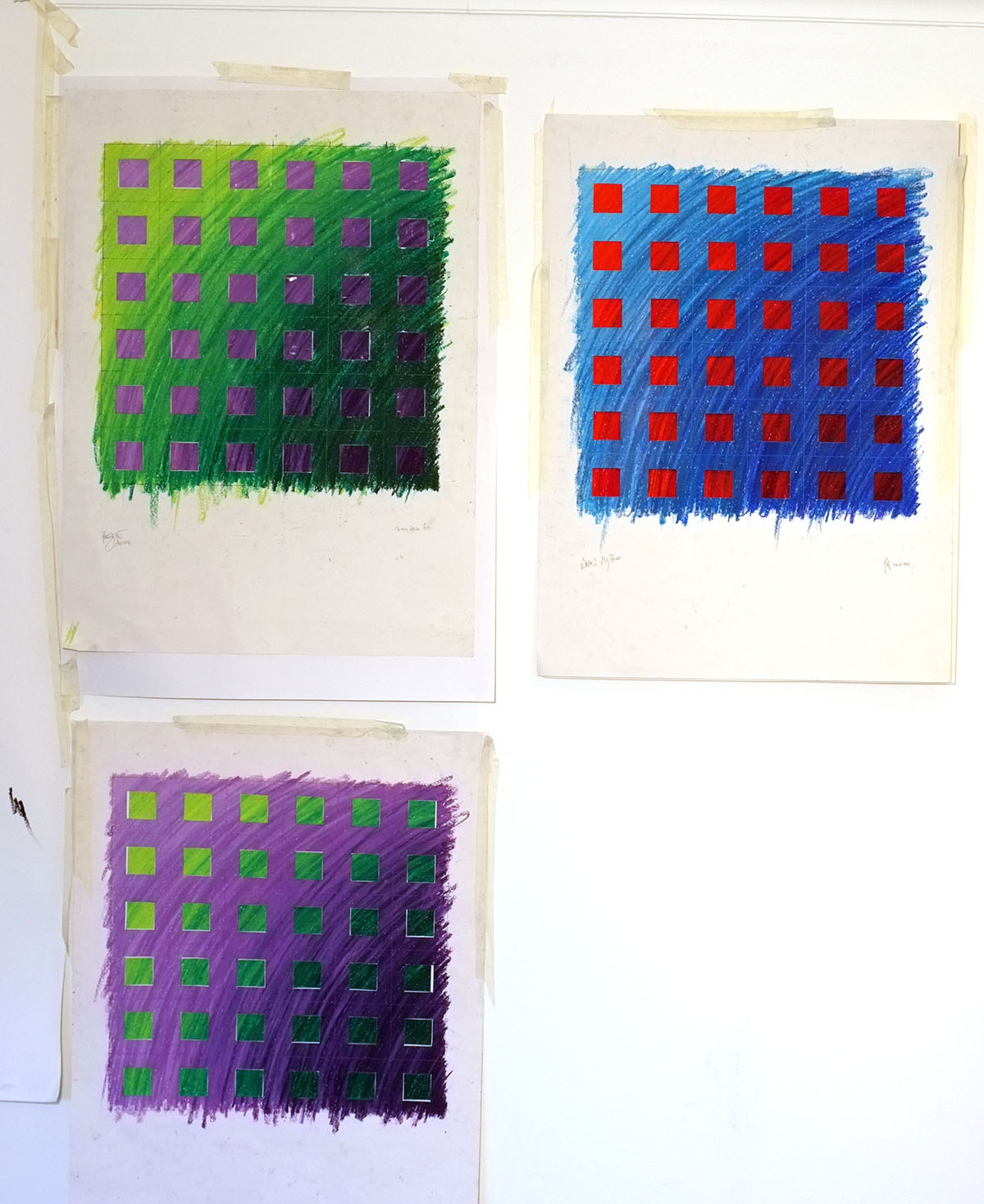
The grids are drawn and cut so each drawing has its negative, but the practice is forcing me to work more carefully, to be more accurate. Relearning old lessons…but that is what doing ones scales is all about
The play between reality and image, pattern and image, and pattern in image obsesses artists like Hockney and Tom Philips and stretches back through Hopper and the Prairies Realists to the same roots of Turner and the Impressionists. Each artist has their own struggle to find a voice that expresses their relationship with their world. Some of us get tied up in knots trying to work out our worlds, others like Vetreano or Tretchikof say ‘simples’ and produce (Tretchikof’s memoir ‘Pigeons Luck’ is worth a read).
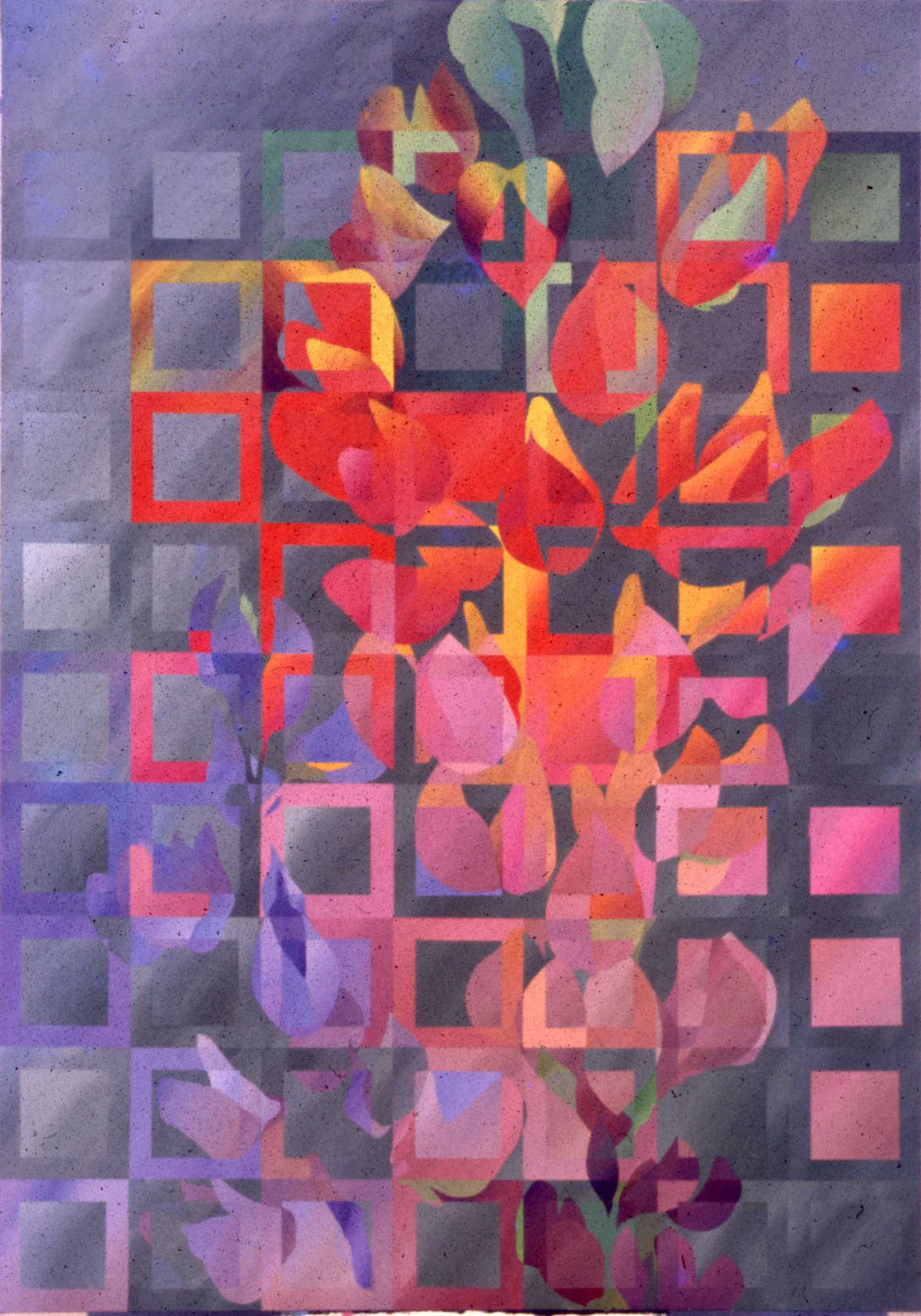
from an old dusty slide. Now in a private collection and was the basis of the 30 foot high mural at Morley College in Central London
Me? Now I’m going to play. Now I’m going to just do and enjoy. to quote Alfred E. Neuman of Mad Magazine “Wot? Me Worry?”
Better late than never…..

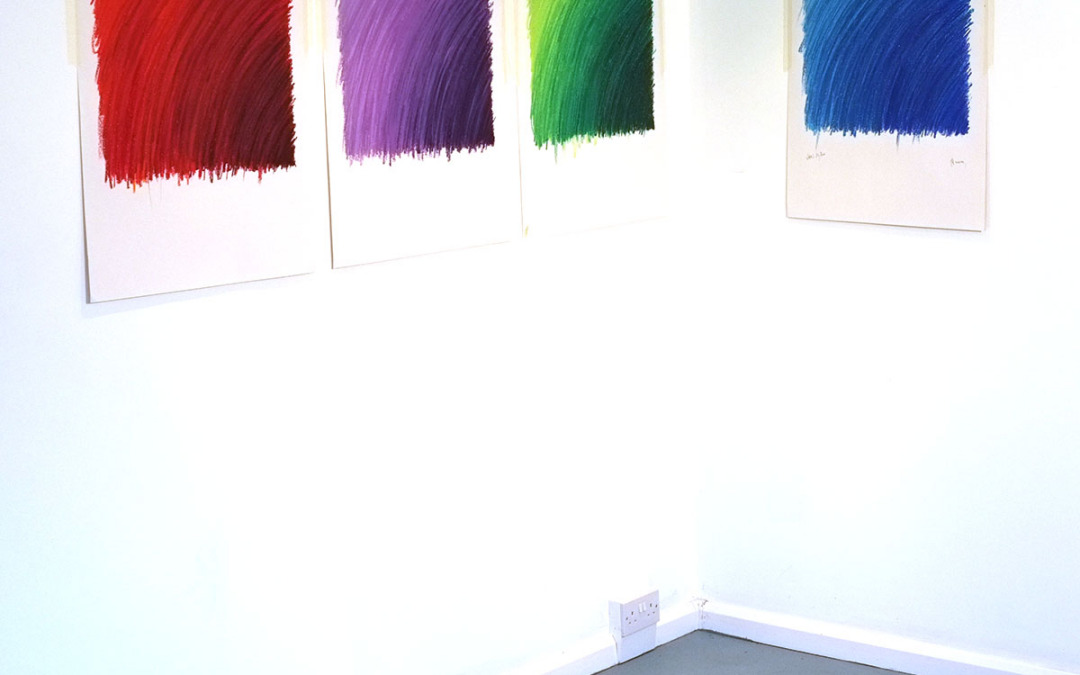

Of course the grid is also an old painterly technique for enlarging an image or transferring from one medium to another
You might be interested in the work of this artist – http://www.lauriefrick.com/. Her concentration is not so much on colour but actual collection of data and then using it as an artistic form.
ThankQ. I know it is an abiding subject for many